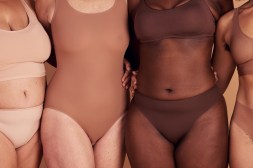The Art of Color Matching: Tips and Tricks for Coordinating Outfits

When it comes to putting together a stylish outfit, one of the key elements to consider is color coordination. The right combination of colors can make or break an ensemble, instantly elevating your look from average to outstanding. However, coordinating colors in outfits can be a daunting task for many people. If you find yourself struggling with this aspect of fashion, fear not. In this article, we will explore some tips and tricks to help you master the art of color matching.
Understanding the Color Wheel
Before delving into the intricacies of color coordination, it’s important to have a basic understanding of the color wheel. The color wheel is a visual representation of how different colors relate to each other. It consists of primary colors (red, yellow, and blue), secondary colors (orange, green, and purple), and tertiary colors (a combination of primary and secondary colors).
To coordinate colors effectively in your outfits, you need to understand two fundamental concepts: complementary and analogous colors. Complementary colors are opposite each other on the color wheel, while analogous colors are next to each other.
Complementary Colors
Complementary colors are pairs that create high contrast when placed next to each other. This contrast adds visual interest and can make an outfit pop. Some classic examples include blue and orange, red and green, or yellow and purple.
When incorporating complementary colors into your outfit, it’s essential to strike a balance. One way to do this is by using one dominant color while using its complementary counterpart as an accent. For example, wearing a navy blue dress with orange accessories can create a visually appealing look without overwhelming the eye.
Analogous Colors
Analogous colors are harmonious combinations that sit next to each other on the color wheel. These shades blend seamlessly together and create a cohesive look without overwhelming the eye. For example, pairing different shades of blue, such as navy and sky blue, can result in a soothing and sophisticated outfit.
When using analogous colors, it’s crucial to consider the intensity or saturation of the colors. Mixing different levels of saturation can add depth and interest to your outfit. For instance, combining a vibrant red blouse with a muted burgundy skirt can create a visually pleasing ensemble.
Adding Neutrals
While coordinating colors in outfits is important, incorporating neutrals is equally essential. Neutrals such as black, white, gray, beige, and brown act as stabilizers that help balance out bolder colors. They provide a foundation for your outfit and allow the other colors to shine.
When working with neutrals, you have more flexibility in terms of color choices. They serve as versatile canvases on which you can experiment with different color combinations. For example, pairing a bold red top with black pants creates a classic and timeless look.
In conclusion, coordinating colors in outfits is an art form that can greatly enhance your overall style. By understanding the color wheel and experimenting with complementary and analogous combinations while incorporating neutrals, you can create visually appealing ensembles that showcase your fashion prowess. Remember to have fun and let your creativity shine through as you master the art of color matching.
This text was generated using a large language model, and select text has been reviewed and moderated for purposes such as readability.





